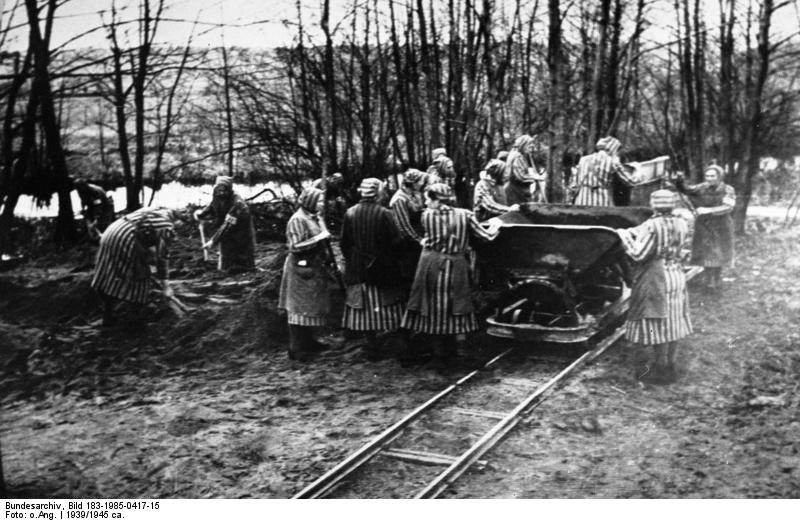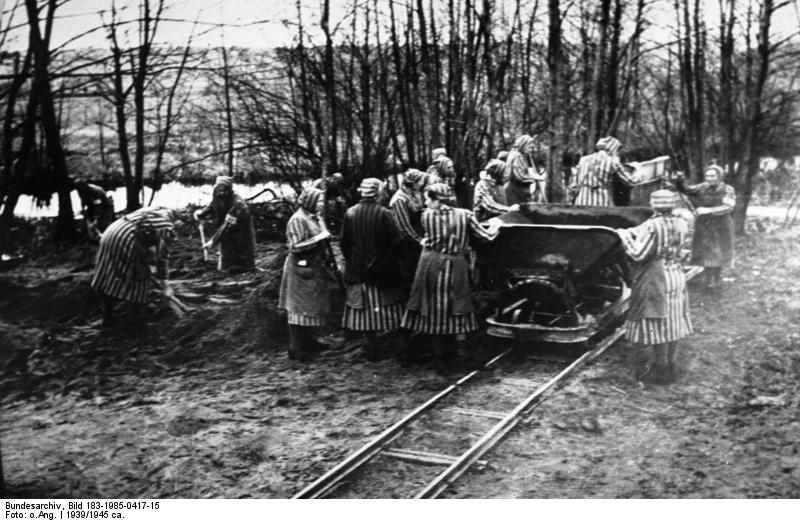Get to know the stories inside Ravensbruck, the Nazis’ death camp for women during the Second World War, as written by author Sarah Helm in her book If This is a Woman: Inside Ravensbruck, Hitler’s Concentration Camp for Women.
Paradise…or Hell?
It was May in 1939 Ravensbruck opened its doors for its first prisoners and queerly, they broke into unexpected smiles upon seeing the place.
The derelicts, prostitutes, political opponents of the Nazis, the “undesirables”…they were taken out from their present locations during that time – the dungeons, the horrific dark cells and ominous workhouses throughout Germany – where they were locked up because they did not conform to the Nazi ideology of womanhood, the Kinder, Kuche, Kirche [Children, Kitchen, Church].
They were, then, loaded into blacked-out buses and were taken to Ravensbruck where a lake with crystal blue water was nearby and the scent of pines filled the air and permeated their noses. As what communist Lisa Ullrich said, their hearts literally leaped with joy at the scenery before them. The camp had no watchtowers and though it was enclosed with barbed wires, inside they could see beds of colorful flowers and an aviary with peacocks and a parrot.
It was a far cry, a paradise from their former prison houses.
But then, that illusion of peace was shattered at a snap of a finger. Droves of female guards rushed to them with their yelping dogs and issued non-stop orders along with calling them names such as hags, whores and bitches. A number of prisoners collapsed due to the onslaught and those who helped them were laid flat and whipped themselves.
The prisoners learned one of the important camp rules that day — to help another inmate was a punishable offense. The commands the female guards shouted out echoed through the trees in Ravensbruck and dawdlers were kicked by jackboots.
Now standing stiff in terror, the women did their best not to get noticed with their eyes fixed on the sandy ground. Small whimpers could be heard in the air. Another crack of the whip sounded and complete silence reigned among the prisoners. They were, then, made to march inside the camp where they were stripped, deloused and their hair trimmed.
From that day on, every minute that the prisoners inside Ravensbruck spent were marked with loud sounding sirens and more rules while inside the barrack blocks, the women inmates were packed tightly with each other in very inhumane conditions. One Ravensbruck inmate described the setting as stepping naked into a cage of wild animals.
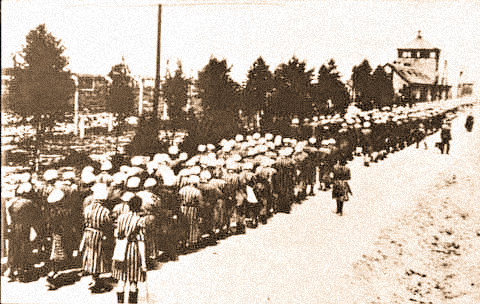
Camp discipline was not only maintained by the vicious guards but also by fellow prisoners as well — by collaborators, kapos and block leaders [blockovas, as they were called]. They were as vile as the guards and were recruited because they share this same characteristic as well as the willingness to follow on orders.
As a matter of fact, these fellow prisoner “guards” were worse as they granted out beatings to keep order within the prison camp in place. Ravensbruck guards also encouraged them to “vent their evilness” against fellow prison inmates.
Women prisoners cramped inside the overcrowded and disease-ridden barracks of Ravensbruck were roused everyday at an ungodly hour, often as early as 3 AM, for a roll call at the camp’s parade ground and were made to stand for hours even during the cold winters wearing only their thin stripped dresses.
A rotund SS man would circle them with his bicycle lashing out at them with a whip. he was the chief of the camp’s slave labor, the one responsible for assigning prisoners to their work details.
After the long hours spent standing, the women were, then, herded off to work in various tasks that go from as simple as sewing military uniforms to making electrical equipment for the Siemens company, which had a factory just outside Ravensbruck, to heavier work loads such as heaving rocks and building roads.
The Population
The first prisoners sent to Ravensbruck were mostly Germans, those who were arrested for petty crimes and those who voiced out their opposition to Nazism. The camp’s first prisoners were not only prisoners but also included opera singers, doctors and even politicians. Later on, women captured from Nazi-occupied countries were also made to stay in the prison camp. many of them helped the Resistance fighters of their respective countries as well as enemy agents including several women from Britain.
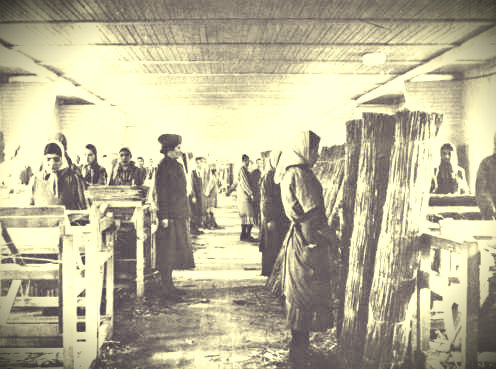
These new arrivals couldn’t help but stare in horror and disbelief at the carts filled with corpses, at the emaciated forms of the prisoners and the never ending smoke coming from the camp’s crematorium on their first arrival at Ravensbruck. These just bespoke of camp conditions — they went beyond horrible.
Ravensbruck was a massive death machine where everything was designed to kill. Female prisoners who became to exhausted or too ill to work were exterminated — either by shooting at the woods just behind the camp or being shipped off through trucks dubbed as the Himmelfahrt [Heaven-bound]. These trucks took groups of women to unknown destinations from where they would never come back. later on, these destinations came to be known as the secret killing centers in Germany and Austria or oftentimes, in the gas chambers of Auschwitz and Belsen.
SS head and the supervisor of the Nazis’ network of concentration camps, Heinrich Himmler, was a constant visitor in Ravensbruck. His mistress, who he affectionately called “Bunny”, lived in their love nest located nearby the camp and it was his practice to drop by when he was on his way to Berlin.
Himmler was the one who allowed the practice of Pruegelstrafe in Ravensbruck — prisoners were strapped on wooden horses and were given twenty-five lashes on the buttocks using an ox-whip. The punishment had long been used on men.
It was also him who encouraged medical experimentation on the women prisoners of Ravensbruck. Camp doctor Walter Sonntag pioneered these experiments starting with methods on how to kill Ravensbruck prisoners best. His favored means were injected petrol and phenol directly into the veins of the inmates. The sadistic doctor also enjoyed extracting healthy teeth from the camp’s inmates without the use of anesthetic.
And upon Himmler’s instructions, Sonntag experimented with the prostitutes interred in Ravensbruck using them his “lab rats” in search for cure for gonorrhea and syphilis. Himmler believed that having an active sex life would make a soldier better at his army performance and had wanted to find out how the men could get their sexual pleasures from brothels without contracting sexually transmitted diseases.
There are no remaining records of the atrocities Sonntag performed on the prisoners even though everyone at Ravensbruck were aware of these occurrences. A camp survivor recounted how she heard about “syphilis being injected into the victim’s spinal cord”.
The Ravensbruck “Rabbits”
Nonetheless, there is an existing strong evidence on another series of ghastly medical trials carried out in Ravensbruck.
The trial started in the summer of 1942. That time, seventy-five of the youngest and fittest inmates in the camp were taken to the parade ground, all of them were Poles. There, SS surgeon Karl Gebhardt lifted their skirts to check on their legs after which six of them were chosen and sent to the camp’s hospital block.
The six women were bathed and placed in beds with crisp, clean sheets before a nurse came in and shaved their legs. She told them to”be brave” before they were wheeled off into the block’s operating theater.
One of the women, before anesthesia took hold of her, was repeating the words “We are not guinea pigs” over and over again. But then, that was what they were though the cam name designated them was Kaninchen or rabbits.
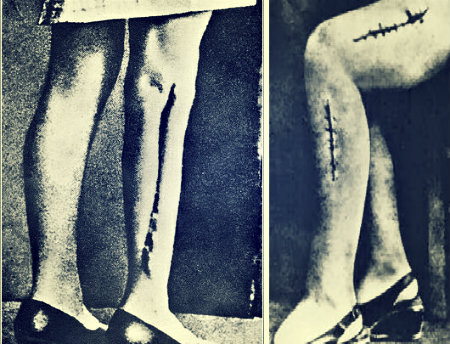
The first “rabbit” woke up to find her legs in plaster. In a span of hours, the six women were screaming in pain as their legs began to swell.
The women were used in the Nazis’ search for the best drugs to treat their wounded soldiers. The victims’ legs were cut open and drenched in bacteria with added dirt, splinters and glass to make sure of infection further spread into their extremities. Days after, the plaster from their legs were removed, their wounds scraped out agonizingly and treated with various experimental drugs.
The “rabbits” who fought against the experimentation, who screamed a little too loud due to pain or were no longer of use were put out of their misery through the administration of lethal injections or shootings at the camp’s woods.
Supposedly top secret, everyone in Ravensbruck were well aware of the medical trials the “rabbits” were going through and were very terrified. As former inmate Maria Bielicka recounted, they were very afraid that the same thing might happen to them and everyone in the camp set out to help the “rabbits” in any way by giving them food. The Poles also set up an aid committee for the “rabbits” and assigned a Polish “mother” for each one of the women under experiment responsible for looking after their welfare.
The trials worsened as time passed by. More bizarre medical theories were tested on the “rabbits” and right until the very end, the women who were at the receiving end of these trials were fearful for their lives as they knew that alive, they were living proofs of one of the atrocities of the Nazis.
Worsening Mass Killings
As the end of WWII neared, the situation inside Ravensbruck also turned from bad to worse. Himmler had decreed that the death camp needed to have its own gas chamber to aid in the wholesale slaughter of the inmates. Ravensbruck had become too overcrowded and the deaths meant there were more spaces for incoming prisoners especially as the camps in the East were forcefully closed. So, the Ravensbruck gas chamber was built in January of 1945.
After the temporary gas chamber was set up, women inmates – at most numbering to a hundred and fifty – were pushed inside. When the doors were shut, a canister of gas was thrown inside from the roof. Witnesses recounted how they could hear moaning and crying that lasted for two to three minutes replaced with deathly silence.
Prisoners in nearby blocks heard lorries pull up and then left running long. When they questioned this, the answer was to cover the screams coming from the victims inside the gas chamber. The inmates’ dead bodies were, then, taken to the camp’s crematorium. Right to the very end, the three furnaces of the edifice gave out billows of smoke.
Gassing at Ravensbruck continued on until its liberation. Even when air raids occurred and Russian guns permeated the silence of the night, the Nazis did not stop executing inmates inside the camp’s gas chamber. As a matter of fact, one weekend alone saw the death of 2,500 women.
From One Hell to Another
The Nazis wanted to erase evidences of their evil crimes before the Allied troops arrived. However, they never did completely annihilate Ravensbruck inmates when in on April 30, 1945, the Soviet’s Red Army came marching in.
The SS guards of the camp fled and the women inmates prepared to hang a red banner across Ravensbruck’s gates. But never did they think their saviors brought in a fresh wave of terror — rape.
As nurse Nadia Vasilyeva recalled, the Russian soldiers came in greeting them as sisters but then they turned to animals and sexually violated them. Even the pregnant women and those with newborn babies were not exempt from the barbarous acts of the Russian soldiers.
And to the women who had endured so much over the time they spent in Ravensbruck, undergoing the violation against their womanhood from their own side was the final straw…
Sarah Helm’s book will be published Thursday, January 15, with the selling price of £25.
